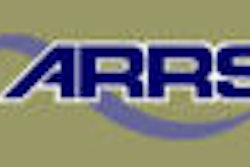PHOENIX - The Doomsday Clock, a graphic depicting the threat level of nuclear danger published by the Bulletin of the Atomic Scientists, currently stands at seven minutes to midnight. Although there is no equivalent symbol for diagnostic imaging in the U.S., time is definitely running out for practices to stave off massive reimbursement cuts mandated by the Deficit Reduction Act (DRA) of 2005.
But it's not time to scurry down to the bunker and pull the door shut, according to a presentation Monday at the Radiology Business Management Association (RBMA) conference delivered by Pam Kassing, senior director of the department of economics and health policy at the American College of Radiology (ACR).
The DRA will cut compensation for out-of-hospital imaging studies by capping the technical component reimbursement for physician-office imaging to the lesser amount of either the Hospital Outpatient Prospective Payment System (HOPPS) or the Medicare Part B Physician Fee Schedule (MPFS). The modalities affected by the DRA include x-ray, ultrasound, nuclear medicine, MRI, CT, and fluoroscopy.
Diagnostic and screening mammography are excluded from DRA cuts, and the professional component of reimbursement is untouched by the act, Kassing said. The Congressional Budget Office estimates that DRA implementation, scheduled to begin on January 1, 2007, will provide $2.8 billion in savings to the U.S. government over a five-year period.
The ACR initiated legislative efforts the day after passage of the DRA last year. Primary among its labors has been the formation of the Access to Medical Imaging Coalition (AMIC), which has provoked vigorous debate on the AuntMinnie.com discussion forums. According to Kassing, the 40 groups participating in the AMIC are a consortium of manufacturers, patient advocates, and other physician specialties seeking to stave off DRA implementation.
"The sole goal of the coalition is to repeal or delay the DRA," she said.
The ACR helped to introduce H.R. 5704, the Access to Medicare Imaging Act of 2006, in the U.S. House of Representatives, and a companion bill, S. 3795, in the Senate. According to Ted Burnes, director of the ACR's radiology political action committee RADPAC, who also shared his thoughts during the presentation, the House resolution has gained bipartisan support from 130 members, and the Senate bill has 21 members in support of delaying DRA implementation for two years.
While Congressional members are in recess for midterm elections, the ACR has stepped up its grassroots activity at the local level, Kassing said.
"One of the things that we've found to be very helpful is facility visits, where we've taken the Congressmen to the radiology offices and imaging centers, and educated them on what radiology is and how it is important to the local community," she said.
In addition, the ACR has increased its letter writing and phone campaigns, supported petition signing, and continued with its data gathering efforts to demonstrate the impact of DRA implementation on diagnostic imaging, Kassing said.
On the legislative front, the ACR is looking at various ways to repeal or achieve a two-year delay of DRA implementation. These could be fixed to the sustainable growth rate (SGR) conversion factor or a Medicare Part D enrollment extension, Kassing said.
No matter the outcome of the forthcoming election, the ACR believes that the lame-duck Congress will have to come together on some form of appropriation legislation.
"We honestly think that there will be a lame-duck session before the end of the year where Medicare and Congress will have to get some work done on appropriations with the possibility that a lot of things will get tagged onto that," Kassing said.
When it comes to the election outcome, the ACR has prepared for either the Democratic or Republican party obtaining a legislative majority.
"If either or both Houses switch majorities, we would expect an activist agenda by the Democrats from 12 years of pent-up frustration and that we might be able to get something passed through," Kassing said.
"If the majority remains the way it is, the feeling on the hill is that the administration wants Medicare reform, and they want to cut costs and will look for ways to do that. Of course, imaging is an easy target, but they are looking to overhaul the Medicare program as much as they can and cut back on spending," she said.
By Jonathan S. Batchelor
AuntMinnie.com staff writer
October 24, 2006
Related Reading
CMS to use ACR data for proposed fee schedule revamp, June 27, 2006
The added value of ACR accreditation, June 13, 2006
Van Moore selected as ACR chair, May 26, 2006
ACR and ACRIN to launch PET registry in May, April 27, 2006
ACR suspends member for malpractice testimony, March 30, 2006
Copyright © 2006 AuntMinnie.com



















